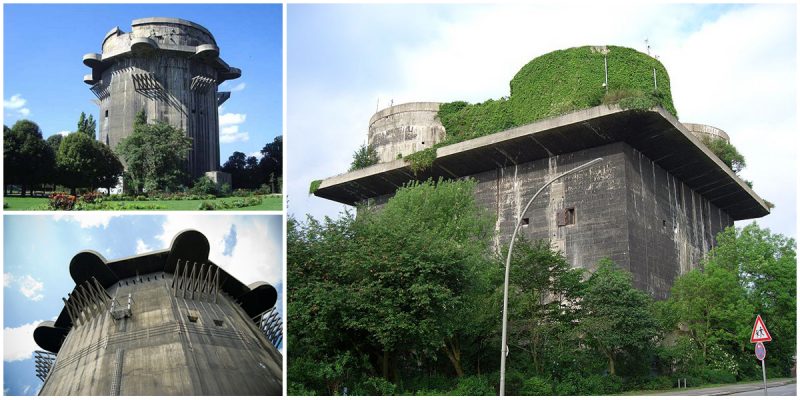The structures were indeed massive—in some areas the walls were nearly 7 feet thick and reinforced with steel.
An unprecedented find was uncovered recently in Berlin by author and historical researcher Jonny Bay: the handmade photo album and Soldbuch (military ID) of a former member of the very little-known unit Turmflak Abt 123.
The unit was a crack Flak (anti-aircraft) unit, trained on some of the most deadly and sophisticated flak guns the Germans fielded during World War II.
The deadly Flak crews of this unit did not operate from the ground like traditional Flak units but were placed upon what is known today as one of Hitler’s deadly mega structures, the Flaktürme (Flak Towers).
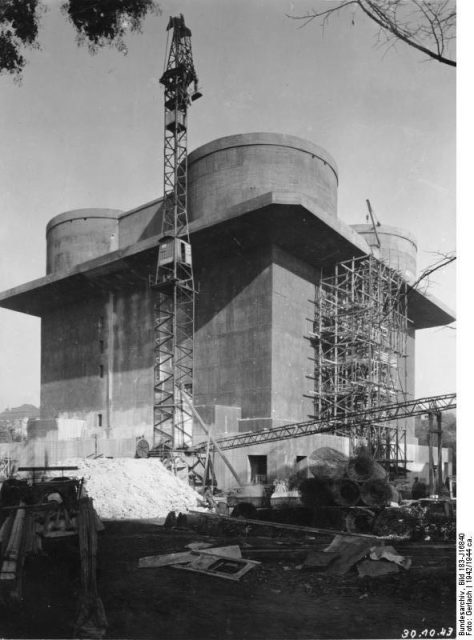
The cities of Berlin, Hamburg and Vienna had these mega structures peeking above their sky lines. In Berlin, three sets of flak towers were created: in Friedrichshain, Humboldthain, and in the Zoo/Tiergarten. A set of towers was made up of the G-Tower (larger, held the heavy cannons) and the L-Tower (smaller, held the radar and optical devices).
The structures were indeed massive—in some areas the walls were nearly 7 feet thick and reinforced with steel. They were high enough to offer a great deal of protection over the cities they were intended to protect.
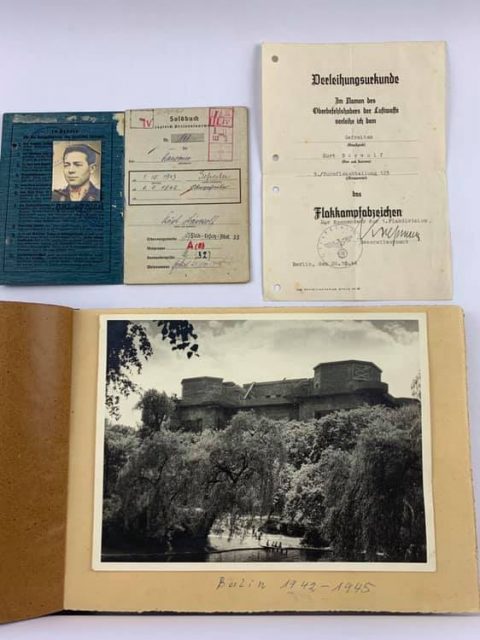
The towers went through various upgrades to their armament throughout the war. The final main guns proved to be extremely effective, causing havoc on the Allied airmen high above the city. In Berlin, eight barrels of 128mm Flak 40 were the main armament, situated in pairs on each of the four corners of the towers.
The barrel length of these guns was a staggering 25.5 feet long and could inflict heavy damage on any targets within a range of just over 35,000 feet (10 km). The ammunition was fed from inside the G-Tower to the top, where the gunners would place the 105-lb (47.7 kg) round into place. A total of up to fourteen rounds could be fired per barrel per minute.
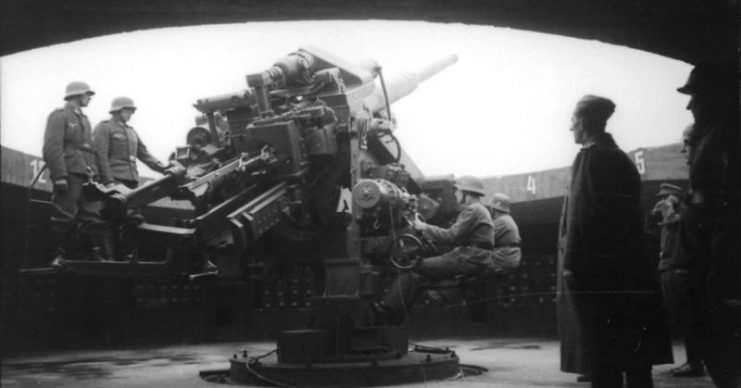
The fire was directed by the Kommandogerät 40 (command range finder) while the guns were operated by a crew of 5-6 men. His calculations allowed the heavy flak to be directed into the correct firing positions in order to hit enemy aircraft.
The rounds were set to detonate at the altitude that would wreak the most devastation on the aircraft crews—for the exploding rounds would send many pieces of shrapnel flying through the air.
The lower section of the flak tower was armed with smaller caliber weapons, such as the 20mm Flak and 37mm Flak, in order to fend off low flying aircraft from damaging the tower or the crews.
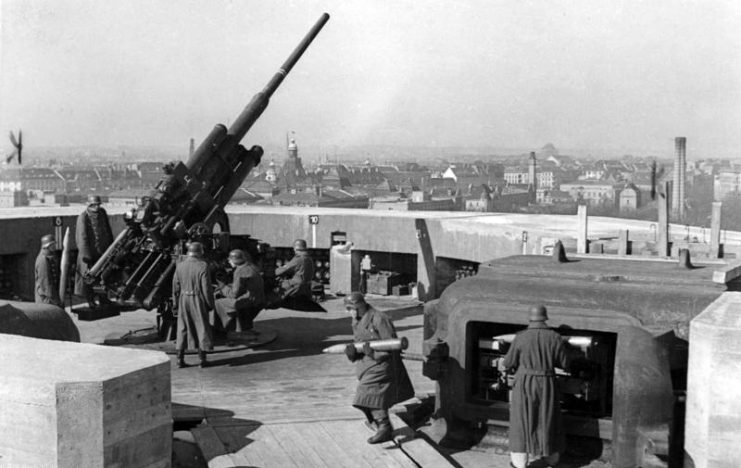
The flak tower crews came from all over Germany, and were selected from regular units to serve on the flak towers. Under the command of the 1st Flak Division, the crews were assigned to the unit Turmflak Abteilung 123. According to recent research, it seems many of the crews alternated among the three towers.
The main crews were assisted by young boys known as Flak Helfer (Flak Helpers). Under direct orders from Hitler in 1943, boys under the age of 18 could be deployed to protect the homeland. While assisting the regular crews, they manned various flak guns and associated equipment all across Germany.
These young boys could earn the same awards as the regular crews if they collected enough points. These points meant they could prove they helped to destroy specific Allied aircraft.
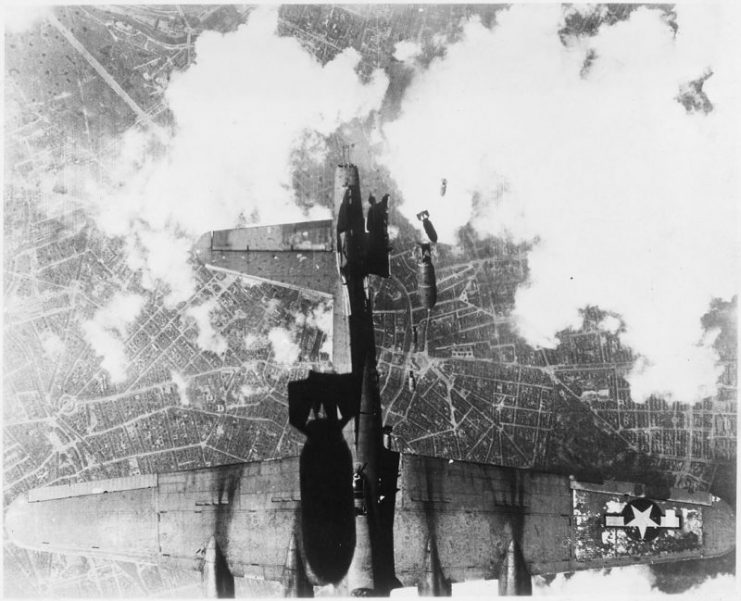
Target: Berlin
Since August 1940 Berlin was hit with around 363 known air raids. By November 1943 the term “Battle of Berlin” was coined. The largest raid took place in February 1945 by the US 8th Air Force, in which nearly 1,600 planes advanced to the city and created devastation below. The Berliners called such Allied attacks Terrorangriffen (terror attacks).
Both day and night Berlin was hit, sending a clear message to the heart of the Third Reich. Many civilians sought refuge inside the large flak towers which offered adequate protection for tens of thousands of Berliners—those that could make it there in time.
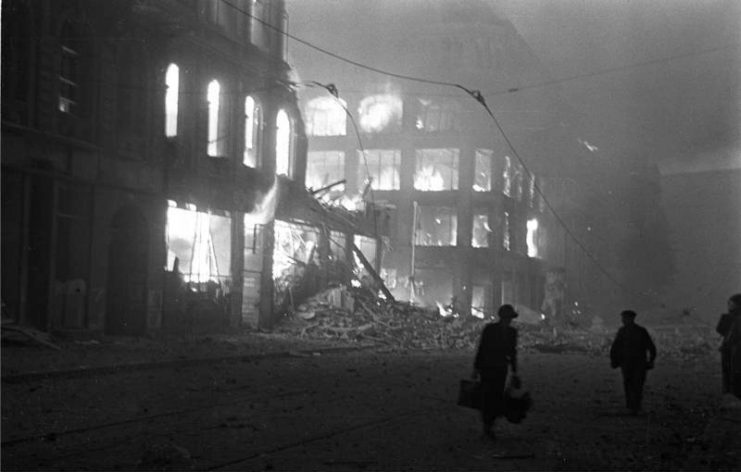
By the end of May 1944, the Humboldthain flak tower under the command of Oberleutnant Horst Meyer had a total of at least 11 confirmed hits. The barrels of its deadly flak guns were adorned with white rings denoting confirmed kills (by 1945 that grew to over 30 confirmed kills).
Today, many airmen of the British Royal Air Force who were killed in the many Berlin raids are buried at the British War Cemetery on Heerestrasse, Berlin.
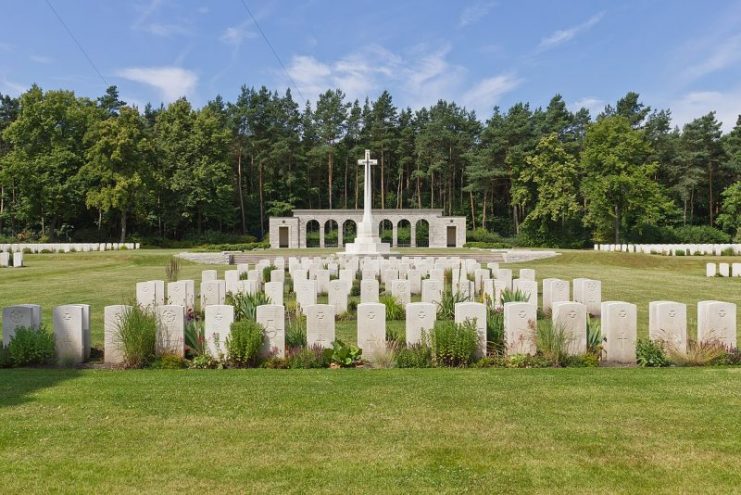
The unprecedented find of just over 100 pictures taken by a gunner on both the Humboldthain and Friedrichshain flak towers is an extremely rare glimpse into the everyday life of a gunner there.
These military installations were not places where hobby photographers had free rein, and that makes the album one of a kind worldwide.
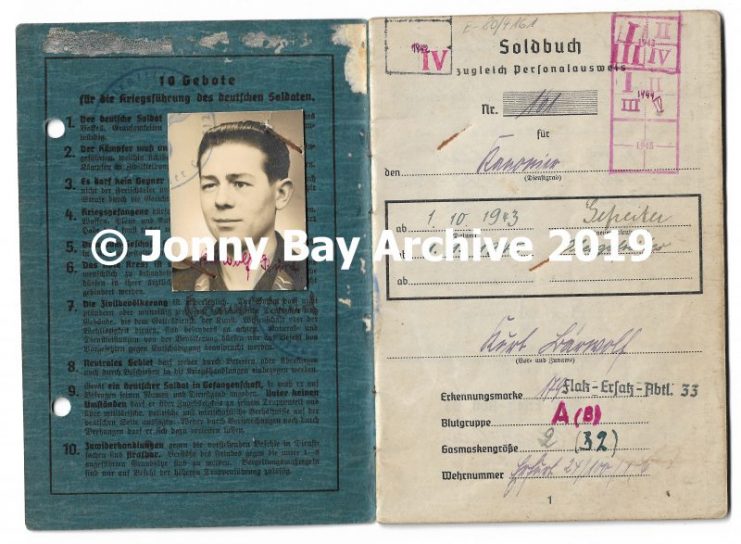
The gunner who compiled the album was Kurt Bärwolf. He enlisted into the Luftwaffe (German air force) in 1942 and was trained as a heavy gunner. From late 1942 he was stationed in Berlin, assigned to Turmflak Abt 123.
Bärwolf was one of what seems very few to have had his own personal camera on the towers. He documented what it was like, not only in the quiet times but also during raids and even close calls on the tower at night.
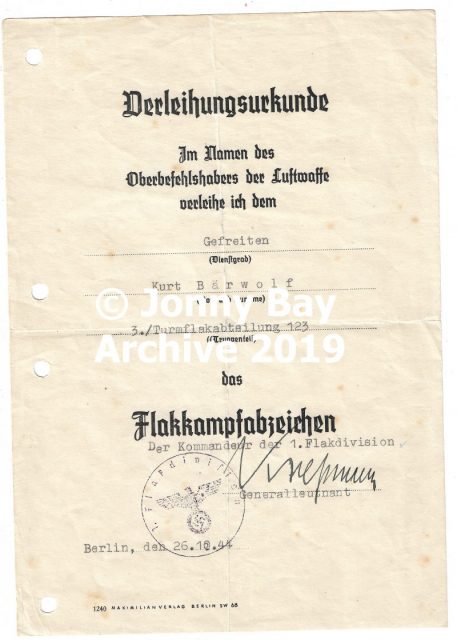
Inside the photo album was his Soldbuch, the most important item on any German soldier or officer since it was to be presented upon request at any time. It served firstly as an identification method and secondarily as a record of what the soldier was issued, where he was assigned, and many other entries.
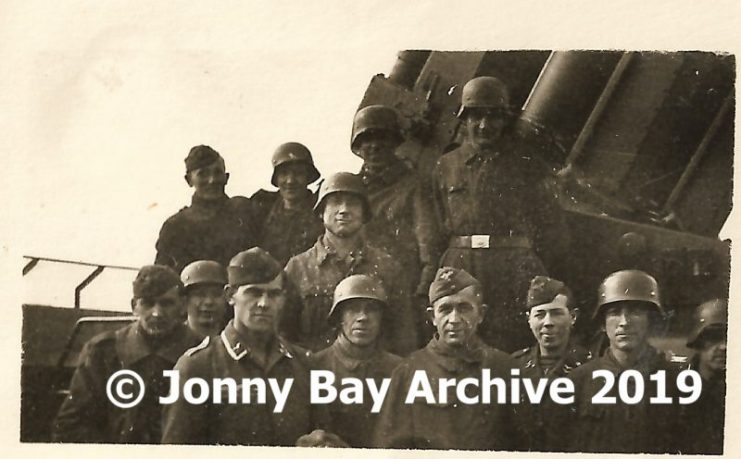
Essentially, in the hands of a researcher it can paint a clear picture of the former owner’s service. The Soldbuch of Bärwolf serves as a silent witness to what its owner experienced—it was carried every day in his tunic pocket during the Battle of Berlin from its early stages to the very end.
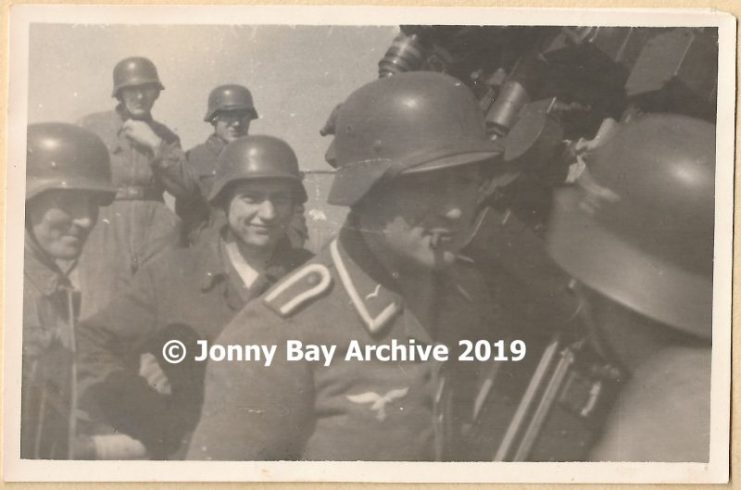
Tucked in the back was his award certificate for the Anti-Aircraft Flak Battle Badge. This was awarded only after the accumulation of 16 points, of which 4 points were given for the battery bringing down an aircraft. Bärwolf’s certificate was signed by General Lt Kressmann, commanding officer of the 1st Flak Division, who died in late January 1945.
There are only three known Soldbuchs for members of the Berlin flak towers, two of which are in the author’s archive.
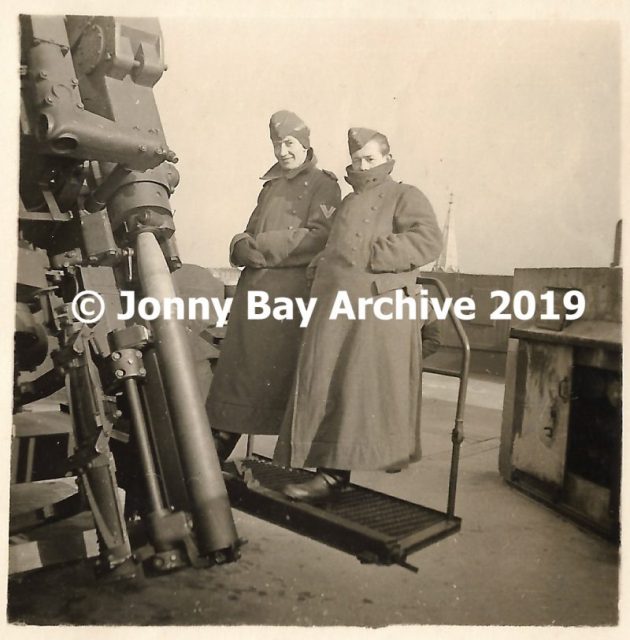
Bärwolf’s full story and photo album will feature in Jonny Bay’s new book—alongside more than 130 other unique, personal items and their untold stories—entitled Berlin 1945: A Collection of Stories Inspired by Artefacts.
During the Soviet attack on the Reich capital in April 1945, the flak towers created untold devastation on the Soviet armor and men below. It was so bad that nothing the Soviets had in their arsenal could breach the towers’ thick walls. It was therefore decided to bypass the flak towers, and attack them at a later date.
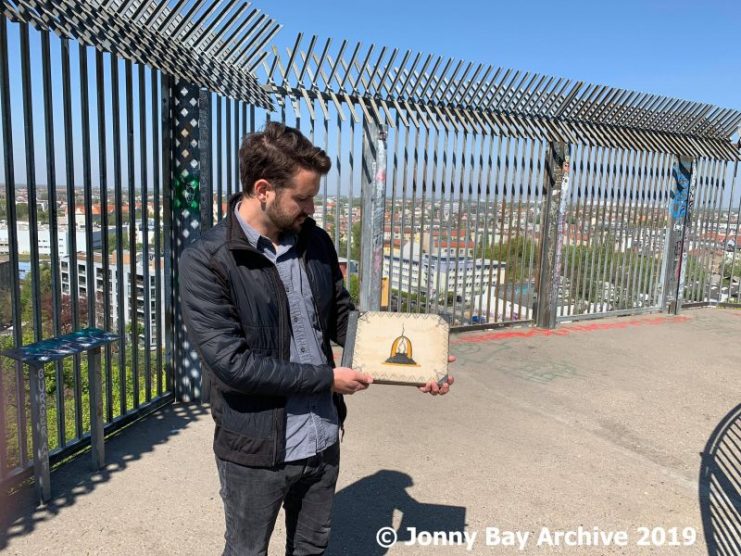
The heavy flak then took on a new role, hitting ground targets and offering artillery-like support to other German units in Berlin during the final breaths of the Third Reich.
Interestingly, at Humboldthain the tower commander Oberleutnant Meyer made it out of the Battle for Berlin and reached the American lines on the Elbe. His crew would continue manning the guns till Germany’s official capitulation in early May.
At Friedrichshain the commander, Oberleutnant Küttner, was awarded the Knight’s Cross (Germany’s highest combat award during WWII) in Hitler’s bunker in late April. He did not make it out of Berlin alive.
Bärwolf escaped through a tunnel from the flak tower and was subsequently captured by Soviet forces. Due to his glass eye he was not considered a threat, and after a short time he was sent home. This is likely the reason his Soldbuch and his photo album were saved for future generations.
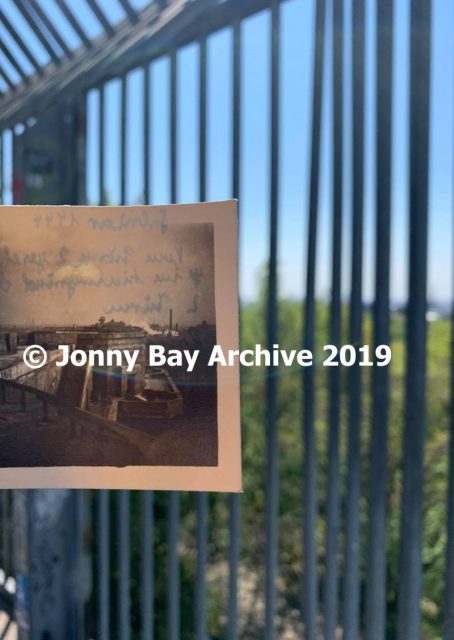
Today, bristling out of a young forest near one of Berlin’s largest train stations and busy roads is a gigantic relic. The flak tower at Humboldthain was one of the three sets of mega structures that underwent a radical demilitarization in postwar Germany.
The Zoo and Friedrichshain towers were destroyed, but thankfully the demolition at Humboldthain came to halt, so half of the tower remains. With two of its original gun platforms open to the public, it offers a spectacular view of Berlin below. Today it serves as a reminder of the destructive power of war.
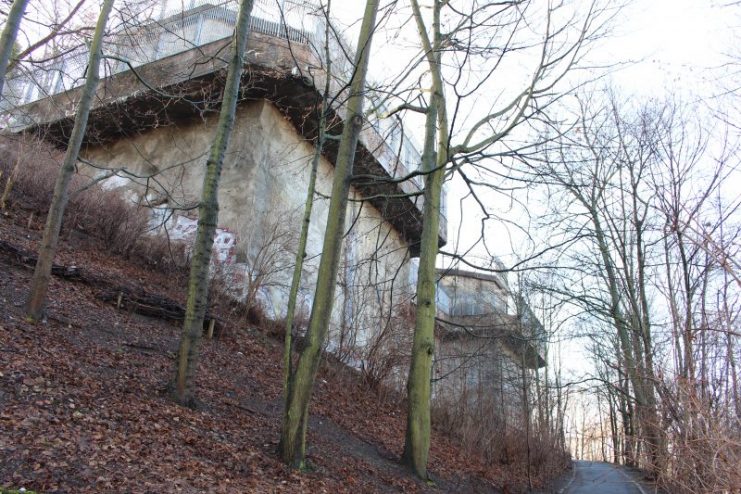
Read another story from us: The Best Gun of WWII – Flak 88 in photos
The battered, battle damaged and massive gray walls of the flak tower are surrounded by a lush green forest and a beautiful park, all built on a mountain of rubble from the destruction of the city during the war. It’s hard not to notice red bricks or roof tiles poking out from the ground when walking to the top of the tower, a stark reminder of the cost of total war.
History enthusiasts in Berlin can book a tour with the famous Berliner Unterwelten, which has exclusive rights to conduct tours inside the ruins of the flak tower at Humboldthain.
Jonny Bay’s Facebook Page: History.Hunter.Official
Jonny Bay’s Instagram: History hunter official
